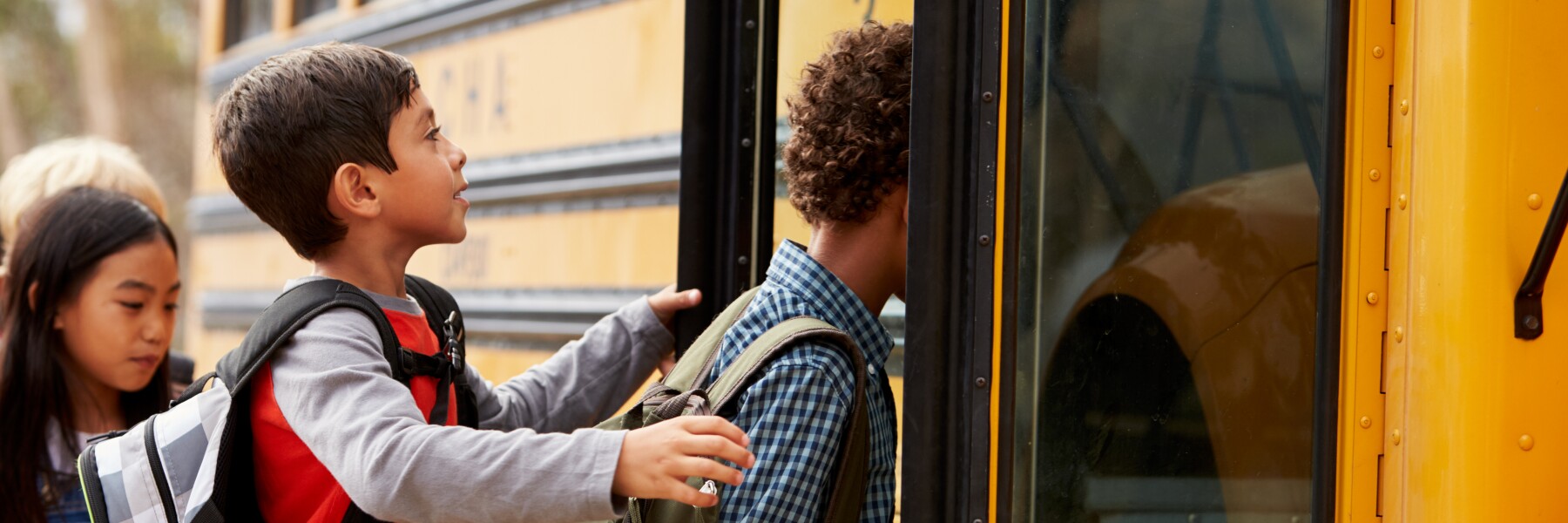
-
What Issues Matter to U.S. Voters?
- What Issues Matter to U.S. Voters?
- Optimism about Local Schools
- People Misunderstand School Funding
- What Do Most Americans Support?
- What Issues Divide Americans?
- Americans Support School Choice
- Parents Care about More Than Testing and Metrics
- Opinions Can Change over Time
- Sources
- School choice and opportunity
- Facilities policies
- Accountability
- The needs of low-income and urban communities
Most voters say jobs and the economy are the most important issues to them in the 2016 presidential race. In a recent Gallup poll, only 4% said education was America’s most important problem. While education doesn’t rank at No. 1 in national surveys, most people think education should be one of the president’s top priorities.
A 2015 poll conducted by Communities In Schools and Public Opinion Strategies asked swing state voters about education. Nearly 7 in 10 respondents say improving K-12 public education should be a top priority for the next president. That survey also found that 76% believe it should be a top priority for all children to get a good education, no matter their economic circumstances.
We looked at key education public opinion surveys to provide an overview of American public opinion related to K-12 education.
FiveThirtyEight: The Big Issues of the 2016 Campaign And where the presidential candidates stand on them, Nov. 19, 2015
Communities in Schools: Poll: Public Education, Poverty is a Top Priority, Nov. 5, 2015
Parents are more satisfied with their own local schools than with schools nationally. The 48th annual PDK/Gallup Poll survey on the Public’s Attitudes toward the Public Schools, 48% of parents give their communities’ schools A’s or B’s, compared to only 24% of parents who give the nation’s public schools A’s or B’s.
This trend — of grading local schools higher than the nation’s schools — has been consistent since PDK/Gallup first asked this question in 1985, and the same trend is reflected in the EdNext Poll on School Reform.
The 48th Annual PDK/Gallup Poll: Testing Doesn’t Measure Up for Americans, September 2015, questions 2 and 3
The 10th Annual EdNext Poll on School Reform
Americans think their local schools are underfunded compared to schools nationally. The 2016 EdNext Poll, a national survey, found that people estimate that their local district spends $7,020 per year per child, compared to a guess of $8,484 nationally. In fact, according to the U.S. Department of Education, the United States spends about $12,000 per year per child on average.
The 2015 EdNext Poll found that people think the federal government pays for a third of America’s education budget — and should pay even more. In reality, though, the federal government currently contributes about 10%.
Education Next — Survey 2016, Questions 4 and 5
Education Next — Program on Education Policy and Governance — Survey 2015, Questions 6, 8, 10, and 11
National Center for Education Statistics: Fast Facts, Expenditures
National Center for Education Statistics: Public School Revenue Sources, April 2016
Some issues in education are not controversial: when surveyed, people tend to agree. For example, most Americans support giving families more choices of where to send their children to schools, and most support public charter schools. Six times more people think standards are too low than too high. And, for the last 11 years, the PDK/Gallup Poll has found that people rank “lack of financial support” as the biggest problem facing America’s schools.
The 2016 PDK/Gallup Poll found that 84% of respondents say schools that have been failing for a number of years should remain open rather than shut down. Most (62%) also said they supported replacing the failing schools’ administrators and teachers.
Most people also support more career, technical, and skills-based classes. The 2016 PDK/Gallup Poll found that nearly 70% of respondents thought more career-focused classes would benefit students, compared to 21% who said students needed more honors or advanced classes.
Americans are divided on many issues in education. For example, in 2016, 39% of people say there should be national standards, while 51% say state governments should determine what students know. (This was a change from the previous year when 41% of people said the federal government should set standards, compared to 43% who favored state governments.)
The same proportion of Americans favor using tax dollars to help children attend private schools as oppose the idea. It is important to note, however, that public responses about vouchers differ depending on the way the question is asked and who is asked. For example, Hispanic families are more likely to favor vouchers than white families, and Democrats are more likely to favor them than Republicans.
About the same percentage of respondents with school aged children told PDK that the new state standards changed what’s being taught for the better and for the worse (with 49% seeing an improvement and 47% seeing a decline).
Nearly two-thirds of Americans favor permitting parents to select any public school in their community, support that’s relatively consistent across racial groups, according to PDK. The same survey found that 61% of public school parents say they have enough information to pick the “best choice” school for their children, compared to 33% who say they don’t have enough information.
About two-thirds of parents (67%) say there is too much emphasis on testing in U.S. schools, the 2015 PDK survey found. On that survey, most said when assessing the effectiveness of the public schools in their community, they cared more about children’s engagement with classwork and the percentage of students who feel hopeful about their future than about metrics such as the percentage of students going on to college or the percentage of students who are able to get jobs immediately after graduating.
Only one in five parents say they think it’s very important to be able to compare students in their community’s schools to performance of students in other districts, other states, and other countries.
PDK Q1, Q2, Q6, Q33, Q34
Public opinion changes over time. The PDK/Gallup Poll reports that in 1970, three-quarters of Americans wanted local students to take national tests so their results could be compared with those of students in other cities and states. Today, 64% of Americans say there is too much emphasis on testing and 54% oppose having teachers in their community use the Common Core State Standards. Recently, support for the Common Core State Standards has fallen farther.
It is important for educators and leaders to routinely ask Americans what they believe is best for their children, their schools and their communities.
Some of the issues we hope will remain at the forefront include:
1. What Issues Matter to U.S. Voters?
FiveThirtyEight: The Big Issues of the 2016 Campaign And where the presidential candidates stand on them, Nov. 19, 2015
Communities in Schools: Poll: Public Education, Poverty is a Top Priority, Nov. 5, 2015
2. Optimism about Local Schools
The 48th Annual PDK/Gallup Poll: Testing Doesn’t Measure Up for Americans, September 2015, questions 2 and 3
The 10th Annual EdNext Poll on School Reform
3. People Misunderstand School Funding
Education Next — Survey 2016, Questions 4 and 5
Education Next — Program on Education Policy and Governance — Survey 2015, Questions 6, 8, 10, and 11
National Center for Education Statistics: Fast Facts, Expenditures
National Center for Education Statistics: Public School Revenue Sources, April 2016
4. What Do Most Americans Support?
EdNext, Q12a
PDK, Q10
PDK, Q1, Q15, Q16, Q30
5. What Issues Divide Americans?
EdNext 2015, 15
EdNext 2016, 8, 14, 22, 30
PDK 2016, Q12A
6. What Do Many People Oppose?
PDK, Q18
7. Americans Support School Choice
PDK Q14, Q15, Q16, Q23
Choice over time (PDK)
8. Parents Care about More Than Testing and Metrics
PDK Q1, Q2, Q6, Q33, Q34
9. Opinions Can Change Over Time
PDK, p. 8
PDK Q2, Q11
EdNext




